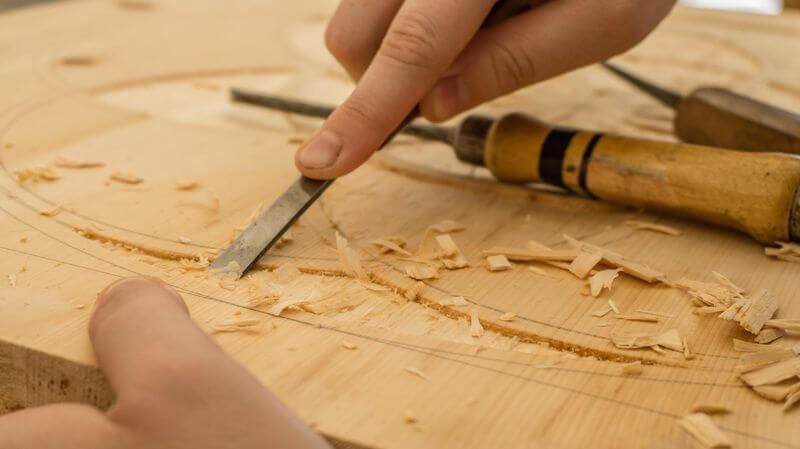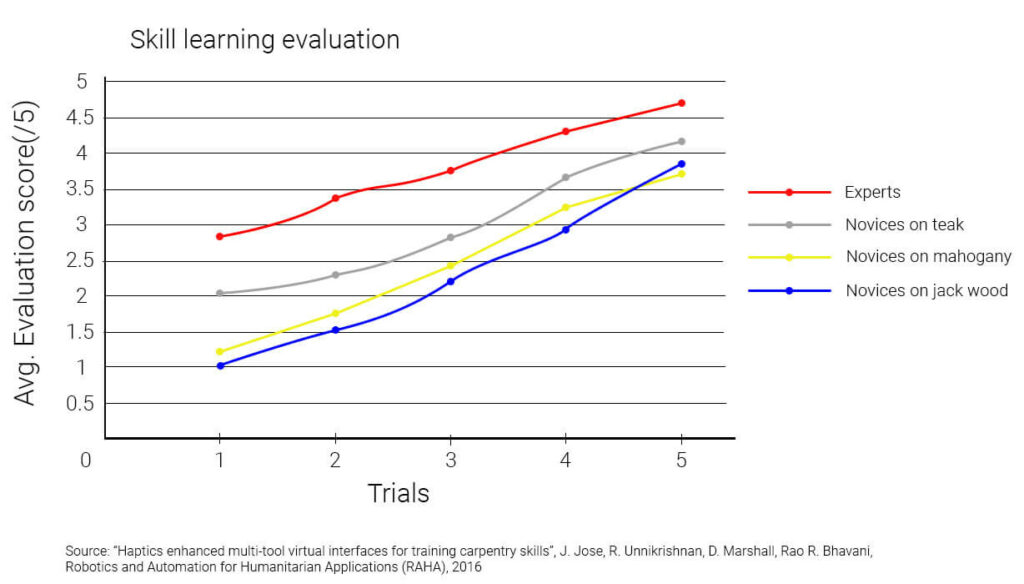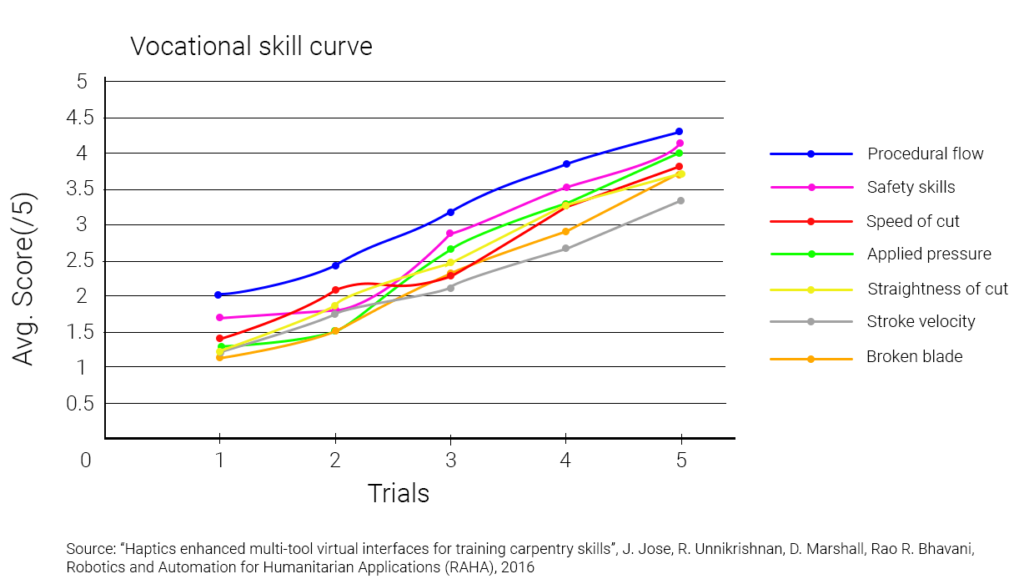In this piece of content haptic training is regarded as a key factor in developing and improving motor skills.
Let’s descend deeper into proof of concept case study “Haptics enhanced multi-tool virtual interfaces for training carpentry skills” by J. Jose, R. Unnikrishnan, D. Marshall, Rao R. Bhavani. It was published in Robotics and Automation for Humanitarian Applications (RAHA) in 2016.
Training simulation platform for this experiment represents a cost-effective system for imitating diverse spread procedures and exercises in a virtual environment with an emphasis on carpentry skills. Such a system with audio-visual-haptic feedback is intended for 2 purposes. The first one is to replace conventional training at the beginning of professional skill training. The second purpose is to accelerate the process of learning for learners from various backgrounds.
The essence of the case was to cut pieces of wood with the help of various cutting tools and plane them down if necessary. The trainee selects wood material, type of the virtual tool, and then handles it through the haptic training. In the course of the experiment, 2 types of haptic feedback were used: vibrotactile feedback and linear force feedback.

The level of improving (in percentages) skill development via haptic training was calculated based on a comparison of the average evaluation score on the first and the last trial.

As it can be seen from the Table 1, 10 novices made 5 trials with 3 types of wood. In every case the improvement percentage of skill learning was impressive: 53.6% for jack wood, 46 % for mahogany and 41.2% for teak. Thus, ran the number on this, and the average improvement percent for novices was 46.93%.
As for experts, they have been doing some woodworking with all 3 types of material. Their average improvement percent amounted to 36.2%.
The progress made by both experts and novices is more evident on the chart “Skill learning evaluation” illustrated below. Herewith, it’s naturally that the experts’ curves are more sharply increasing than the experts’ one. This indicates that newcomers learn faster as they develop completely new skills.

Skill set analysis that is illustrated in the Table 2 revealed that novices achieved marked improvement regarding safety skills (50.6%), applied pressure (51.4%), and broken blade (52%). In addition, speed of cut, straightness of cut, procedural flow and stroke velocity also progressed by 46%, 45.2%, 43.4% and 40% respectively.

Numeric data are also represented on the chart “Vocational skill curve” for the convenience of perception. It is clear from the chart that haptic training application improved every controlled skill. Moreover, the scores for performing all the skills were increased from 40 % to 50 %, which is spectacular, of course.

Thus, haptic training in combination with video and audio proved its effectiveness as a tool in professional skill training and development. Moreover, haptic technology in this experiment contributed to an impressive increase in scores of every skill trained by both novices and experts.
It can be assumed, that VR environment for training with haptic feedback can be implemented in many businesses where the motor skill learning of workers is extremely important and is held on a regular basis. Haptic training accelerates the learning process and enables skills confidence and experience. Also, haptic application in training can address the problems related to the shortage of coaches and training space, need to spend materials on the development of skills and the complexity of remote learning organization.
